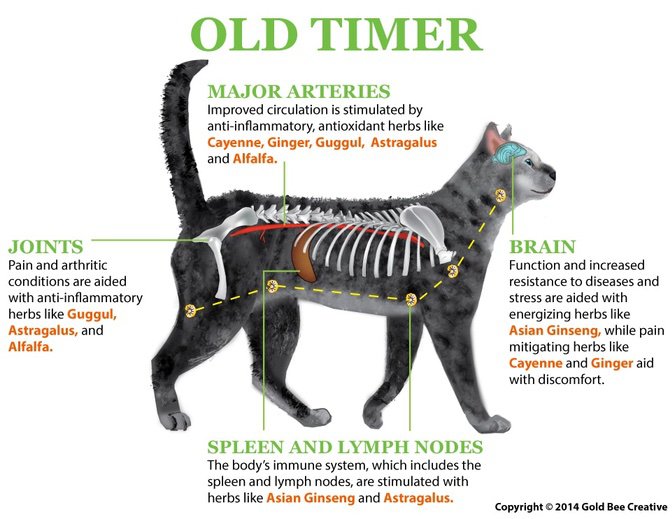arthritis support

free shipping over $100 (USA & Canada)
1-877-937-4372 the pet expert hotline


When our pets are in pain, we are in pain. It can be incredibly frustrating when you don’t know what is wrong with your pet and you don’t know how to help. Animals can experience pain even if they cannot identify or communicate it the same way people do. Just like in humans, their pain is also an unpleasant experience with sensory and affective elements. Recognizing pain in our pets can be challenging in many cases, however, there are some signs that can help you recognize if your pet is uncomfortable.
When in pain, some pets can show signs like agitation or lack of activity, decreased appetite, lack of grooming, excessive licking of a specific area, changes in posture, growling, groaning, eyes partially closed, pacing and vocalization.
Behavioral changes have been recognized as indicators of pain in animals. Showing indications of the presence, location, and severity of pain. If you pay enough attention to your pet’s normal behavior, chances are you’ll be able to notice minor changes.
When in pain, some pets can show signs like agitation or lack of activity, decreased appetite, lack of grooming, excessive licking of a specific area, changes in the posture, growling, groaning, eyes partially closed, pacing and vocalization. Some can also hide and avoid interactions and may act aggressively when you try to approach them. In cats especially, a protrusion of the third eyelid can occur. These are more obvious signs that something is wrong with the pets, but in most cases, the behavioral changes perceived are far more subtle than those.
Bathroom habits can change, for instance. If a cat is presenting urinary tract problems, for example, they may associate pain with the litter box and can start avoiding it at all costs. When this happens, kittens can start urinating in different places around the house. Many pet owners can see this shift in behavior as misbehavior and don’t consider it as being related to pain, which only aggravates the situation. If you have an indoor cat, it’s easier to recognize this new habit, however, if you have a cat that goes outdoors, chances are you won’t be able to observe this.

Besides urinary tract problems, the same occurs with pets presenting conditions such as osteoarthritis, for instance. Conditions like this make it uncomfortable to pass stool and pets can’t defecate normally unless they can squat. If their joints are stiff and sore, they may struggle to go normally, and this can lead to constipation. Some pet owners might think that there’s something wrong with their food when actually, the root cause can be related to joint discomfort in those cases.
So, as you can see, these behaviors are not specific signs of discomfort, they point only to an underlying problem that needs to be diagnosed. If your pet’s behavior has changed, you should take your little one to the veterinarian. The vet will check aspects like your pet’s history, vital signs, and behavioral changes in order to evaluate the pain.
Vital signs like heart rate, respiratory rate, pupil dilation, and blood pressure may be altered in a pet in pain, however, in many cases, they remain the same as usual. There is no “gold standard” to assess pain in animals but the veterinarian can use pain scales to try to identify it. A pain score is obtained by using a questionnaire that includes information like breed, age, gender, environment and living conditions, cause of pain, body region affected, and the duration and intensity of pain, for instance. An adequate history and physical examination and sometimes further exams are essential to trying to identify the cause of their pain. Evaluating the degree of lameness and sensitivity to manipulation are also important to assess chronic pain. A comprehensive neurologic examination must be included for complete assessment and accurate diagnosis of any chronic pain syndrome. The pet’s response to therapy, such as increased activity after administering pain medication, may provide important diagnostic information regarding the role of discomfort in behavioral changes as well.

NHV Supplements can provide excellent support for pets who are in discomfort.
Yucca: This supplement contains steroidal saponins that stimulate the body to produce its own natural corticosteroids. Yucca extract is a powerful anti-inflammatory with nutritive properties that may help with symptom relief related to inflammation, discomfort, and loss of appetite. It’s also great for supporting arthritic and joint problems.
Turmeric: A member of the ginger family, Turmeric (Curcuma longa) has been used extensively and is known to exhibit rich antioxidant, antibacterial, and anti-inflammatory properties while helping support a variety of health conditions such as cancer, heart conditions, and arthritis.
Old Timer: Old Timer is an herbal formulation with anti-inflammatory and restorative actions, which can help with nervous system disorders, fatigue, arthritis, and reduces discomfort.
In case you have any questions on how our supplements can help your little one, please do reach out. Our pet experts will be more than happy to assist you! Stay safe and healthy out there!
arthritis support

Support for Arthritis and Cancer
buy 2 and save $3
3 month supply for a small to medium size
What is it?
Turmeric is an herb that offers support for cardiovascular issues, skin health, liver and kidney disease, arthritis, and overall well-being.
How does it work?
Why trust it?
NHV Turmeric is vet-formulated and vet-approved.

What is it?
Turmeric is an herb that offers support for cardiovascular issues, skin health, liver and kidney disease, arthritis, and overall well-being.
How does it work?
Why trust it?
NHV Turmeric is vet-formulated and vet-approved.
From their tails to their whiskers, a cat’s body needs to be able to fight whatever comes their way - and not just the toys they like to chase, but health concerns too. NHV Turmeric for cats can be given to your furkiddos for a little extra TLC. It’s well-tolerated by our whiskered furkiddos, and can offer them many benefits!
What goes into your cat’s body every day will make a difference when it is time to fight a disease, or when they already have one. That’s why NHV supplements are designed to be given each and every day for things like:
It can even be used proactively before your furry friend becomes sick in the first place by giving them a regular boost of natural goodness!
Turmeric itself is a root with vibrant orange-golden flesh. It’s golden in the world of herbalism for pets with its many healing properties.
One of turmeric’s most well-recognized healing properties is its antioxidant content. Antioxidants can help scavenge for free radicals, which are unstable molecules that cause damage to the cells. The free radical scavenging properties of turmeric can support the body in processing and removing these molecules, minimizing the damage they can do.
At NHV, we are experts at harnessing the benefits of herbal ingredients specifically for your pets. When you choose NHV Turmeric, you’re choosing decades of holistic pet wellness experience from vets and herbalists. Our formula is:
We are proud to have been a part of many cats’ success stories over the decades. Check out this feline friend of ours, Willow, who has used our Turmeric for cats formula for comfort and wellness.
Willow’s Story: “I have no doubt that the supplements from NHV have been a huge part in maintaining her health and staving off the cancer that was found in late 2021”
Holistic Veterinarian Approves of Using Turmeric for Cats
Dr. Hillary, a holistic vet, writes an in-depth overview of Turmeric and why she believes turmeric can play a beneficial role in pet health. Read Dr. Hillary’s Turmeric overview here.
All NHV supplements are made with the finest quality organic or ethically harvested herbs. We use non-GMO vegetable glycerin as our base. NHV products are full-spectrum extracts.
Select your pet's weight to determine the correct dose.
To be taken twice daily. Determine your pet’s weight and then use the easy chart below to determine the correct dose. This is the minimum dosage.
Pet's Weight Dosage
0 - 15 lb = 0.5 ml
16 - 30 lb = 1.0 ml
31 - 45 lb = 1.5 ml
46 - 60 lb = 2.0 ml
61 - 75 lb = 2.5 ml
Over 75 lb = 3.0 ml
How to Administer
Shake well before use. The easiest method is to use the dropper provide and places the drops into your pet’s food or favorite treat. You can also use the dropper and squirt directly into the pet’s mouth.
Some pets can be finicky, if this occurs consider hiding the drops in foods most pet’s love such as fish, chicken or yogurt or a favourite treat. If your pet only eats dry food then soak a few kibbles at feeding time.
For Best Results
Herbal dietary supplements are beneficial to the health and wellbeing of your pet and are safe for long-term use. Every pet responds to natural herbal supplements differently, therefore it is important to be consistent and administer the product daily. Supplements generally take two to four weeks to take effect, however this will vary from one animal to the next.
Product Storage
All NHV Natural Pet Products are pure herbal extracts and contain no artificial additives, preservatives or coloring. Shelf life after opening is 6 months and must be refrigerated after opening.
Cautions and Contraindications: Do not use Turmeric in pregnant or nursing animals. Speak to your vet before using our products. A second visit is recommended if your pet’s condition does not improve, or deteriorates after continued use of the supplements.
From their tails to their whiskers, a cat’s body needs to be able to fight whatever comes their way - and not just the toys they like to chase, but health concerns too. NHV Turmeric for cats can be given to your furkiddos for a little extra TLC. It’s well-tolerated by our whiskered furkiddos, and can offer them many benefits!
What goes into your cat’s body every day will make a difference when it is time to fight a disease, or when they already have one. That’s why NHV supplements are designed to be given each and every day for things like:
It can even be used proactively before your furry friend becomes sick in the first place by giving them a regular boost of natural goodness!
Turmeric itself is a root with vibrant orange-golden flesh. It’s golden in the world of herbalism for pets with its many healing properties.
One of turmeric’s most well-recognized healing properties is its antioxidant content. Antioxidants can help scavenge for free radicals, which are unstable molecules that cause damage to the cells. The free radical scavenging properties of turmeric can support the body in processing and removing these molecules, minimizing the damage they can do.
At NHV, we are experts at harnessing the benefits of herbal ingredients specifically for your pets. When you choose NHV Turmeric, you’re choosing decades of holistic pet wellness experience from vets and herbalists. Our formula is:
We are proud to have been a part of many cats’ success stories over the decades. Check out this feline friend of ours, Willow, who has used our Turmeric for cats formula for comfort and wellness.
Willow’s Story: “I have no doubt that the supplements from NHV have been a huge part in maintaining her health and staving off the cancer that was found in late 2021”
Holistic Veterinarian Approves of Using Turmeric for Cats
Dr. Hillary, a holistic vet, writes an in-depth overview of Turmeric and why she believes turmeric can play a beneficial role in pet health. Read Dr. Hillary’s Turmeric overview here.
All NHV supplements are made with the finest quality organic or ethically harvested herbs. We use non-GMO vegetable glycerin as our base. NHV products are full-spectrum extracts.
Select your pet's weight to determine the correct dose.
To be taken twice daily. Determine your pet’s weight and then use the easy chart below to determine the correct dose. This is the minimum dosage.
Pet's Weight Dosage
0 - 15 lb = 0.5 ml
16 - 30 lb = 1.0 ml
31 - 45 lb = 1.5 ml
46 - 60 lb = 2.0 ml
61 - 75 lb = 2.5 ml
Over 75 lb = 3.0 ml
How to Administer
Shake well before use. The easiest method is to use the dropper provide and places the drops into your pet’s food or favorite treat. You can also use the dropper and squirt directly into the pet’s mouth.
Some pets can be finicky, if this occurs consider hiding the drops in foods most pet’s love such as fish, chicken or yogurt or a favourite treat. If your pet only eats dry food then soak a few kibbles at feeding time.
For Best Results
Herbal dietary supplements are beneficial to the health and wellbeing of your pet and are safe for long-term use. Every pet responds to natural herbal supplements differently, therefore it is important to be consistent and administer the product daily. Supplements generally take two to four weeks to take effect, however this will vary from one animal to the next.
Product Storage
All NHV Natural Pet Products are pure herbal extracts and contain no artificial additives, preservatives or coloring. Shelf life after opening is 6 months and must be refrigerated after opening.
Cautions and Contraindications: Do not use Turmeric in pregnant or nursing animals. Speak to your vet before using our products. A second visit is recommended if your pet’s condition does not improve, or deteriorates after continued use of the supplements.
joint support

For Arthritis, Muscle and Joint Discomfort Relief in Cats.
buy 2 and save $3
3 month supply for a small to medium size pet
What Is It?
Old Timer is a natural supplement that supports cat joint movement, relieves discomfort, and reduces inflammation.
How Does it Work?
Why Should I Trust It?
Vet-formulated, holistic supplement safe to use long-term.


What Is It?
Old Timer is a natural supplement that supports cat joint movement, relieves discomfort, and reduces inflammation.
How Does it Work?
Why Should I Trust It?
Vet-formulated, holistic supplement safe to use long-term.

Provide cat joint support and ease the discomfort arthritis can cause with Old Timer, an herbal tonic that helps in the management of arthritis and its symptoms. Arthritis is a degenerative disease that tends to affect the elbow joints in cats (though any joint can be affected). It’s a debilitating condition that can lead to hip dysplasia and impaired mobility.
Arthritis gradually becomes worse over time and can become debilitating to your cat. To help with this condition, keep your cat away from cold or damp areas and provide opportunities to stimulate them with exercise.
Also, talk to your vet about means of joint discomfort relief for your cat. Adding holistic supplements, such as those by NHV to your vet’s conventional treatment plan, along with other holistic therapies like hydrotherapy and acupuncture is an effective way to provide excellent cat joint support.
Getting or keeping your frosted face kitty or doggo at a healthy weight can help decrease the pressure on the bones and joints.
Vet-formulated, holistic supplements by NHV are safe to use long-term. They’re ethically-sourced with Non-GMO ingredients. If you have questions, ask our pet experts at NHV. We’re here to help alleviate your pet’s discomfort naturally.

Guggul – Eases uncomfortable arthritis symptoms.
Asian Ginseng – Contains natural immune-supporting properties.
Ginger – An antioxidant and anti-inflammatory.
Astragalus – Helps support the immune system by enhancing phagocytic activity and increasing interferon production.
Alfalfa – A plant containing vitamins, amino acids, minerals, and high protein levels.
Cayenne – A tonic with anti-inflammatory properties.
Select your pet's weight to determine the correct dose.
To be taken twice daily. Determine your pet’s weight and then use the easy chart below to determine the correct dose. This is the minimum dosage.
Pet's Weight Dosage
0 - 15 lb = 0.5 ml
16 - 30 lb = 1.0 ml
31 - 45 lb = 1.5 ml
46 - 60 lb = 2.0 ml
61 - 75 lb = 2.5 ml
Over 75 lb = 3.0 ml
How to Administer
Shake well before use. The easiest method is to use the dropper provide and places the drops into your pet’s food or favorite treat. You can also use the dropper and squirt directly into the pet’s mouth.
Some pets can be finicky, if this occurs consider hiding the drops in foods most pet’s love such as fish, chicken or yogurt or a favorite treat. If your pet only eats dry food then soak a few kibbles at feeding time.
For Best Results
Herbal dietary supplements are beneficial to the health and wellbeing of your pet and are safe for long-term use. Every pet responds to natural herbal supplements differently, therefore it is important to be consistent and administer the product daily. Supplements generally take two to four weeks to take effect, however this will vary from one animal to the next.
Product Storage
All NHV Natural Pet Products are pure herbal extracts and contain no artificial additives, preservatives or coloring. Shelf life after opening is 6 months and must be refrigerated after opening.
Cautions and Contraindications
Do not use Old Timer in pregnant or nursing animals. Should be used in moderation in cases of sensitive digestive tract. Speak to your vet before using our products. A second visit is recommended if your pet’s condition does not improve, or deteriorates after continued use of the supplements.
All information provided by NHV Natural Pet Products is for educational purposes only.
Provide cat joint support and ease the discomfort arthritis can cause with Old Timer, an herbal tonic that helps in the management of arthritis and its symptoms. Arthritis is a degenerative disease that tends to affect the elbow joints in cats (though any joint can be affected). It’s a debilitating condition that can lead to hip dysplasia and impaired mobility.
Arthritis gradually becomes worse over time and can become debilitating to your cat. To help with this condition, keep your cat away from cold or damp areas and provide opportunities to stimulate them with exercise.
Also, talk to your vet about means of joint discomfort relief for your cat. Adding holistic supplements, such as those by NHV to your vet’s conventional treatment plan, along with other holistic therapies like hydrotherapy and acupuncture is an effective way to provide excellent cat joint support.
Getting or keeping your frosted face kitty or doggo at a healthy weight can help decrease the pressure on the bones and joints.
Vet-formulated, holistic supplements by NHV are safe to use long-term. They’re ethically-sourced with Non-GMO ingredients. If you have questions, ask our pet experts at NHV. We’re here to help alleviate your pet’s discomfort naturally.

Guggul – Eases uncomfortable arthritis symptoms.
Asian Ginseng – Contains natural immune-supporting properties.
Ginger – An antioxidant and anti-inflammatory.
Astragalus – Helps support the immune system by enhancing phagocytic activity and increasing interferon production.
Alfalfa – A plant containing vitamins, amino acids, minerals, and high protein levels.
Cayenne – A tonic with anti-inflammatory properties.
Select your pet's weight to determine the correct dose.
To be taken twice daily. Determine your pet’s weight and then use the easy chart below to determine the correct dose. This is the minimum dosage.
Pet's Weight Dosage
0 - 15 lb = 0.5 ml
16 - 30 lb = 1.0 ml
31 - 45 lb = 1.5 ml
46 - 60 lb = 2.0 ml
61 - 75 lb = 2.5 ml
Over 75 lb = 3.0 ml
How to Administer
Shake well before use. The easiest method is to use the dropper provide and places the drops into your pet’s food or favorite treat. You can also use the dropper and squirt directly into the pet’s mouth.
Some pets can be finicky, if this occurs consider hiding the drops in foods most pet’s love such as fish, chicken or yogurt or a favorite treat. If your pet only eats dry food then soak a few kibbles at feeding time.
For Best Results
Herbal dietary supplements are beneficial to the health and wellbeing of your pet and are safe for long-term use. Every pet responds to natural herbal supplements differently, therefore it is important to be consistent and administer the product daily. Supplements generally take two to four weeks to take effect, however this will vary from one animal to the next.
Product Storage
All NHV Natural Pet Products are pure herbal extracts and contain no artificial additives, preservatives or coloring. Shelf life after opening is 6 months and must be refrigerated after opening.
Cautions and Contraindications
Do not use Old Timer in pregnant or nursing animals. Should be used in moderation in cases of sensitive digestive tract. Speak to your vet before using our products. A second visit is recommended if your pet’s condition does not improve, or deteriorates after continued use of the supplements.
All information provided by NHV Natural Pet Products is for educational purposes only.
joint support

Natural Muscle Discomfort Support for Dogs and Cats
Turmeric, Old Timer & Yucca
bundle and save with pet expert kits
3 month supply for a small to medium size pet
What Is It?
NHV’s Muscle Pain Kit 1 is a natural supplement bundle designed to support pets' muscles and joints, help reduce inflammation, improve circulation, and promote overall comfort and mobility.
How Does it Work?
Why Should I Trust It?
100% natural supplement, vet-approved, and vet-formulated.


What Is It?
NHV’s Muscle Pain Kit 1 is a natural supplement bundle designed to support pets' muscles and joints, help reduce inflammation, improve circulation, and promote overall comfort and mobility.
How Does it Work?
Why Should I Trust It?
100% natural supplement, vet-approved, and vet-formulated.

Are you noticing more aches and discomfort in your body when the weather changes? As the weather dampens and cools down, you're not the only one who's feeling a sudden chill in their bones—pets can be especially vulnerable to joint discomfort during colder fall and winter months. Give your furkiddo the support they deserve with NHV’s Muscle Pain Kit 1.
Natural Discomfort Relief for Dogs and Cats
When our pets are in discomfort, we are in discomfort! It can be extremely stressful when you don't know what is wrong with your fur baby and you're not sure how to help them. It is essential to look for small changes in their behavior to see if there is more than meets the eye. Some pets can show signs like decreased energy levels, loss of appetite, lack of grooming, groaning, pacing, vocalization, and even changes in bathroom habits when in discomfort. For example, if your furkiddo has really stiff, sore joints, they may struggle to go to the bathroom normally (they need to be able to squat to poop) and this can lead to constipation. Some pet owners might think that there’s something wrong with their diet when their behavior is actually related to joint discomfort. NHV Muscle Relief Kit contains all-natural ingredients like Yucca, Turmeric, Ginger, and Ginseng that can help relieve discomfort, increase energy levels and re-balance your little one’s immune system.
How NHV Remedies Supports Healthy Immunity and Natural Discomfort Relief
You may notice minor changes in your dog or cat's behavior, like resting longer or difficulty getting up. Kitties that stop hopping onto their favorite perch or pups who aren't as energetic about jumping into the car for rides may be suffering from joint issues. As their paw parent, you will want to reduce discomfort and inflammation, improve circulation and support their immune system so that they can bounce back in record time! In severe cases of joint injury or arthritis, limping or muscle atrophy (muscles wasting away) can unfortunately happen. NHV Muscle Pain Kit 1 contains Yucca, Old Timer and Turmeric. Yucca contains natural steroid-like properties that soothe discomfort and inflammation, while Old Timer’s proprietary herbal blend is beneficial for immune support and circulation. And Turmeric has effective anti-inflammatory properties.
Yucca
Old Timer
Turmeric
NHV Muscle Kit 1 is natural healthcare support made of full-spectrum plant extracts that help relieve joint discomfort and inflammation, overall discomfort relief for dogs and cats that work to re-balance the immune system.
At NHV, we are a team of pet experts, vets, and animal lovers. Get in touch with us if you have any questions or concerns about your furkiddo’s discomfort management plan.
Made with the finest, organically grown, or ethically harvested herbs. Made specifically for pets, vet-formulated and vet approved.
Yucca
Old Timer
Turmeric
Select your pet's weight to determine the correct dose.
To be taken twice daily. Determine your pet’s weight and then use the easy chart below to determine the correct dose. This is the minimum dosage.
Pet's Weight Dosage
0 - 15 lb = 0.5 ml
16 - 30 lb = 1.0 ml
31 - 45 lb = 1.5 ml
46 - 60 lb = 2.0 ml
61 - 75 lb = 2.5 ml
Over 75 lb = 3.0 ml
How to Administer
Shake well before use. The easiest method is to use the dropper provided and place the drops into your pet’s food or favorite treat. You can also use the dropper and squirt directly into the pet’s mouth. Some pets can be finicky, if this occurs consider hiding the drops in foods most pet’s love such as fish, chicken or yogurt or a favorite treat. If your pet only eats dry food then soak a few kibbles at feeding time.
For Best Results
Herbal dietary supplements are beneficial to the health and well-being of your pet and are safe for long-term use. Every pet responds to natural herbal supplements differently, therefore it is important to be consistent and administer the product daily. Supplements generally take two to four weeks to take effect, however this will vary from one animal to the next.
Product Storage
All NHV Natural Pet Products are pure herbal extracts and contain no artificial additives, preservatives or coloring. Shelf life after opening is 6 months and must be refrigerated after opening.
Cautions and Contraindications
Do not use in pregnant or nursing animals.
All information provided by NHV Natural Pet Products is for educational purposes only.
Are you noticing more aches and discomfort in your body when the weather changes? As the weather dampens and cools down, you're not the only one who's feeling a sudden chill in their bones—pets can be especially vulnerable to joint discomfort during colder fall and winter months. Give your furkiddo the support they deserve with NHV’s Muscle Pain Kit 1.
Natural Discomfort Relief for Dogs and Cats
When our pets are in discomfort, we are in discomfort! It can be extremely stressful when you don't know what is wrong with your fur baby and you're not sure how to help them. It is essential to look for small changes in their behavior to see if there is more than meets the eye. Some pets can show signs like decreased energy levels, loss of appetite, lack of grooming, groaning, pacing, vocalization, and even changes in bathroom habits when in discomfort. For example, if your furkiddo has really stiff, sore joints, they may struggle to go to the bathroom normally (they need to be able to squat to poop) and this can lead to constipation. Some pet owners might think that there’s something wrong with their diet when their behavior is actually related to joint discomfort. NHV Muscle Relief Kit contains all-natural ingredients like Yucca, Turmeric, Ginger, and Ginseng that can help relieve discomfort, increase energy levels and re-balance your little one’s immune system.
How NHV Remedies Supports Healthy Immunity and Natural Discomfort Relief
You may notice minor changes in your dog or cat's behavior, like resting longer or difficulty getting up. Kitties that stop hopping onto their favorite perch or pups who aren't as energetic about jumping into the car for rides may be suffering from joint issues. As their paw parent, you will want to reduce discomfort and inflammation, improve circulation and support their immune system so that they can bounce back in record time! In severe cases of joint injury or arthritis, limping or muscle atrophy (muscles wasting away) can unfortunately happen. NHV Muscle Pain Kit 1 contains Yucca, Old Timer and Turmeric. Yucca contains natural steroid-like properties that soothe discomfort and inflammation, while Old Timer’s proprietary herbal blend is beneficial for immune support and circulation. And Turmeric has effective anti-inflammatory properties.
Yucca
Old Timer
Turmeric
NHV Muscle Kit 1 is natural healthcare support made of full-spectrum plant extracts that help relieve joint discomfort and inflammation, overall discomfort relief for dogs and cats that work to re-balance the immune system.
At NHV, we are a team of pet experts, vets, and animal lovers. Get in touch with us if you have any questions or concerns about your furkiddo’s discomfort management plan.
Made with the finest, organically grown, or ethically harvested herbs. Made specifically for pets, vet-formulated and vet approved.
Yucca
Old Timer
Turmeric
Select your pet's weight to determine the correct dose.
To be taken twice daily. Determine your pet’s weight and then use the easy chart below to determine the correct dose. This is the minimum dosage.
Pet's Weight Dosage
0 - 15 lb = 0.5 ml
16 - 30 lb = 1.0 ml
31 - 45 lb = 1.5 ml
46 - 60 lb = 2.0 ml
61 - 75 lb = 2.5 ml
Over 75 lb = 3.0 ml
How to Administer
Shake well before use. The easiest method is to use the dropper provided and place the drops into your pet’s food or favorite treat. You can also use the dropper and squirt directly into the pet’s mouth. Some pets can be finicky, if this occurs consider hiding the drops in foods most pet’s love such as fish, chicken or yogurt or a favorite treat. If your pet only eats dry food then soak a few kibbles at feeding time.
For Best Results
Herbal dietary supplements are beneficial to the health and well-being of your pet and are safe for long-term use. Every pet responds to natural herbal supplements differently, therefore it is important to be consistent and administer the product daily. Supplements generally take two to four weeks to take effect, however this will vary from one animal to the next.
Product Storage
All NHV Natural Pet Products are pure herbal extracts and contain no artificial additives, preservatives or coloring. Shelf life after opening is 6 months and must be refrigerated after opening.
Cautions and Contraindications
Do not use in pregnant or nursing animals.
All information provided by NHV Natural Pet Products is for educational purposes only.
Published: September 19, 2020